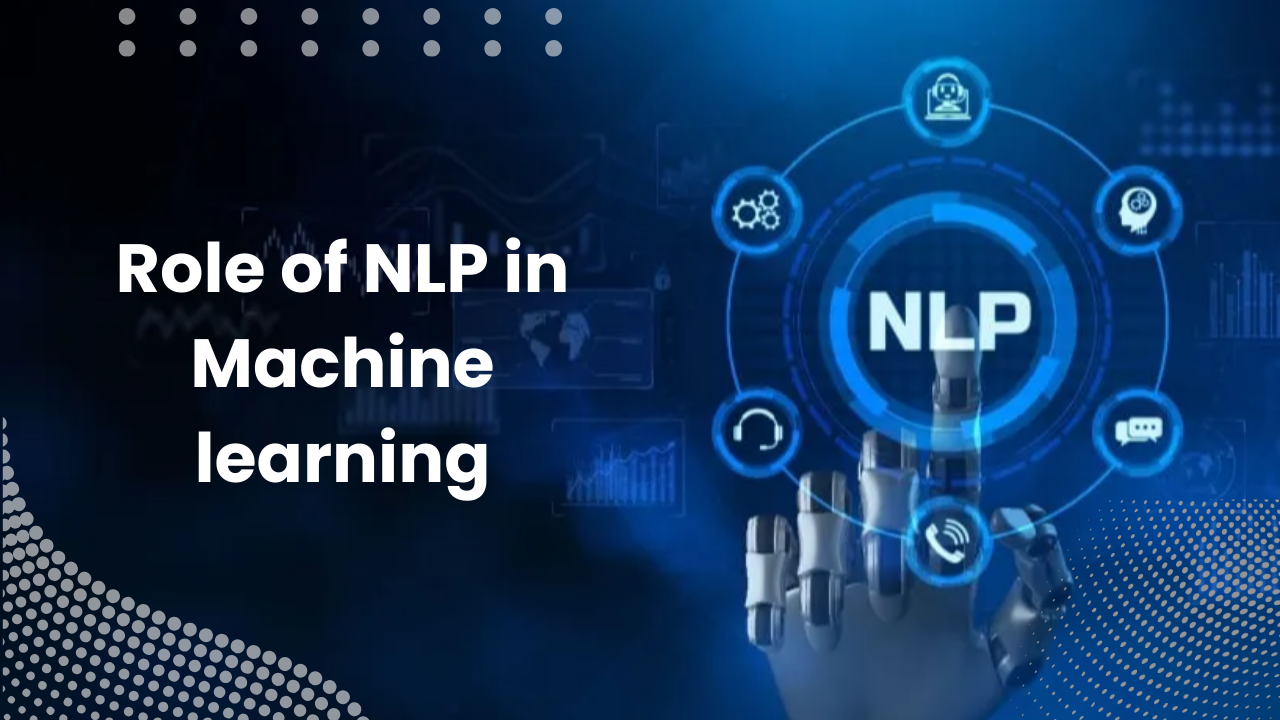Integration of artificial intelligence (AI) in the operations of today’s world is changing how we operate. One subcategory of AI that is truly causing a complete transformation of businesses is machine learning services. The inclusion of technology has facilitated the automation of a variety of tasks, enabling better productivity for all industries. Natural language processing is another essential aspect of artificial intelligence, and it is the one that makes it an “INTELLIGENT” agent.
In this post, we will be defining what natural language processing is and how it combines with machine learning to create truly intelligent solutions.
What is Natural Language Processing & Machine Learning Services?
Natural Language Processing:
Natural language processing, or NLP, as the name suggests, is the technology that gives machines the power to interpret, comprehend, and manipulate human languages. It is the technology behind the most famous chatbots we have in the market today, including ChatGPT and Gemini.
Some examples of NLP in action are ticket classification, summarization, machine translation, and spell check.
Machine Learning Services
Machine learning services include the use of solutions that can leverage information to learn and adapt without the need for explicit instructions. It uses algorithms to draw conclusions from patterns in data.
Some examples of machine learning services in play are predictive analytics, spam mail detection, and more.
What is the Role of Natural Language Processing in Machine Learning
Now that we understand what machine learning services and natural language processing are, let us look at how the two interlink to create the perfect solutions.
NLP in machine learning is the capability of the system to comprehend human languages. However, computers understand the language of 0’s and 1’s. So, we need machine learning services to help it understand human languages like English, Dutch, French, or Hindi.
The aim of NLP is to bridge the gap between human communication and machine understanding, which has resulted in chatbots and sentiment analysis automation, among other things.
So, how does it work?
For machine learning services to leverage Natural Language Processing, it takes five steps. It includes figuring out the sentence structure, understanding it, comprehending the meaning, and more.
ML solutions add value to these steps, allowing for smoother language understanding. The aim of this process is to make it easier for machines to understand and appropriately respond to how we naturally speak and write.
Now, let us dive into how NLP and ML development work in unison to improve computer’s ability to understand our languages.
- Morphological Analysis
After the input of data, the computer receives it in the forms of 0s and 1s. Then, these are converted into ASCII code. In morphological analysis, it determines the words and sentences. This process is known as tokenization.
The deep learning algorithms used for tokenization include Support Vector Machines and Recurrent Neural Networks.
Then, it removes affixes using stemming and lemmatization. For this, it uses ML algorithms like random forests and decision trees.
- Syntactic Analysis
The second step includes a check to see if the sentences follow the grammar rules of the language. For this, the words are first tagged as their respective part of speech. It enables syntactic parsers to check the grammar rules.
Random forest, recurrent neural network, and K-nearest neighbor are some of the algorithms used to implement this stage.
- Semantic Analysis
Here, the meaning of the words comes into play. Languages depend on context as the same words can have difference meaning depending on the sentence. To remove uncertainty from the mix, we come to Word Sense Disambiguation.
It is among the more challenging tasks, and different tools have varying levels of success. Random forest, decision tree, and gradient boosting are some machine learning algorithms that have proved useful. However, recently it is deep learning algorithms like recurrent neural network, gated recurrent unit based recurrent neural network, long short term memory based recurrent neural network have given better result.
- Discourse Analysis
When pronouns are used for specific objects not included in the current analysis preview, machine learning has a problem deciphering these words. Here, machine learning and deep learning algorithms are proving to be successful.
- Pragmatic Analysis
Lastly, pragmatic analysis focuses on the nuances of language. Sometimes, the direct meaning of the sentence and the intended meaning can differ significantly. It can include sarcasm detection.
What is the Role of Machine Learning Services in Natural Language Processing
In the case of machine learning, natural language processing has a huge role to play. Here are a few applications that have benefited from the deep learning techniques.
- Sentiment Analysis
- Chatbot Systems
- Question Answering Systems
- Information Retrieval Systems
- Machine Translations
Machine Learning Services & Natural Language Processing – The Perfect Union!
From the above discussion, it is abundantly clear that machine learning services and natural language processing are two subcategories of artificial intelligence that are currently assisting each other to reach new heights. The use of NLP in machine learning solutions is making customer interactions better, while automating text analysis, and allowing companies to get deeper insights from unstructured data. It also allows for better decision-making for organizations.
Leverage the services of a machine learning services company to create bespoke solutions that meet all your business needs.
Sakshi’s intrigue with the latest technology and advancements, combined with the ability to string words together for maximum information in the least number of words helps her create impactful, meaningful, and useful content for all types of readers. In her leisure time, you will find her snuggled next to a blanket with a hot coffee and mystery book. Follow her MoogleLabs now!

